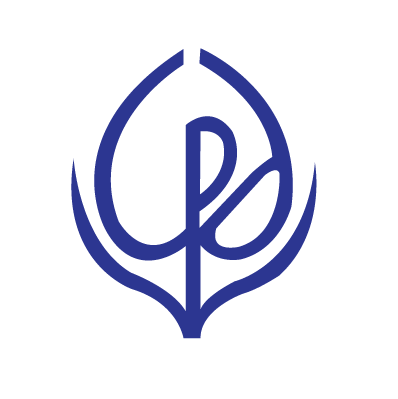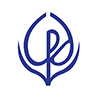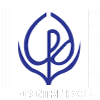Originally posted in Dhaka Tribune on 18 August 2025
Machinery imports decline, investments freeze, employment crisis deepens
- Capital machinery imports fell 25%, pointing to an industrial slowdown and stalled investments
- Economists warn that declining imports and credit growth will hinder industrialisation and job creation
- External balance shows temporary relief, but import stagnation signals long-term economic risks
A strange contradiction has emerged in Bangladesh’s economy.
On one hand, the rise in export earnings and remittance inflows is giving signs of relief in the balance of external transactions. On the other hand, the continued decline in capital machinery imports for the third consecutive year is sending out a clear message of recession in the industrial sector and stagnation in investment.
Economists are of the opinion that while export earnings and remittance inflows bring relief on one hand, the fall in capital machinery imports and stagnation in investment are a grave warning for Bangladesh’s economy on the other.
For industrialization and job creation, policy stability, interest rate control, increased import capacity, and good governance in the banking sector are needed.
According to economists, as much as the relief in external transactions seems positive, the collapse in machinery imports in the industrial sector is equally alarming.
Recent statistics show that in the outgoing 2024–25 financial year, capital machinery imports fell by 25% compared to the previous year. According to the Bangladesh Bank, LC settlements also decreased at the same rate during this period.
Economists and businessmen believe, if this trend continues, new industrialisation will be hindered and the pace of job creation will slow down further.
Collapse in machinery imports
According to the latest report from the Bangladesh Bureau of Statistics, in the outgoing fiscal year, imports of industrial machinery decreased by 25.42%, and LC openings fell by 25.41%. Imports of auxiliary industrial machinery fell by 1.88% and LC openings dropped by 0.51%.
Sector-wise situation
The largest share of industrial machinery imports comes from garments, textiles, and pharmaceuticals. These three sectors account for about 60% of total imports. Among them, only the garments sector saw growth—imports increased by 12.41%, LC openings by 3.81%. In contrast, imports in textiles fell by 25.68% and pharmaceuticals by 35.27%.
In the leather industry, imports increased by 8.56%, but LC openings fell by 43.85%. Imports and LC openings also fell significantly in other sectors, including jute, packaging, agricultural machinery, and computers.
A managing director of an industrial group, on condition of anonymity, said: “Due to the decline in LC openings, a kind of negative attitude towards new investment has developed among entrepreneurs.”
Trend in raw material imports
In the 2024–25 financial year, overall raw material imports increased by 8.37%, though LC openings decreased slightly. However, the main contribution to this growth came from export-oriented industries.
In this sector, raw material imports rose by 18.62% and LC openings by 7.24%. On the other hand, imports of raw materials for edible oil, cotton, pharmaceuticals, and steel declined.
Indications of investment stagnation
Dr Mustafizur Rahman, distinguished fellow at the Centre for Policy Dialogue (CPD), believes: “The fall in capital machinery imports gives a clear indication that entrepreneurs’ interest in new investment is declining. Its long-term impact will fall on industrialisation and employment.”
Pressure in monetary policy
For four consecutive years, contractionary monetary policies, currency devaluation, dollar shortages, and reduced loan flow have discouraged entrepreneurs. In May of the 2024–25 fiscal year, private sector credit growth was only 7.15%, far below the target of 9.5%.
By the end of June, private sector credit growth dropped to 6.49%, the lowest in recent years. Economists believe this continued downward trend in growth indicates investment stagnation in the economy.
Dr Mustafizur Rahman said: “Due to high interest rates, political uncertainty, and contractionary monetary policy, entrepreneurs are discouraged from investing.”
He added: “Capital machinery imports have also fallen, which is adversely affecting employment. I see this as a matter of concern.”
Data from Bangladesh Bank reveal that in the 2024–25 fiscal year, LC openings for capital machinery imports dropped by 25.41%. As a result, the pace of new industrial investment has slowed even more.
According to Mustafizur Rahman, “Although some macroeconomic stability has returned, investors’ discomfort has not gone away.”
In his view, this situation may continue until the upcoming general election.
According to Bangladesh Bank statistics, in February, credit growth was 6.82%, the second-lowest until then. By June, it had fallen to a record low.
Uncertainty over policy support under the interim government, administrative complications, and shortages of electricity and gas are discouraging businessmen.
Pubali Bank’s Managing Director and CEO, Mohammad Ali, said: “It seems entrepreneurs are waiting for political stability and lower interest rates.”
According to businessmen, inadequate utility services, administrative complications, and uncertainty over policy support have become major obstacles to investment.
BKMEA President Mohammad Hatem said: “Due to high interest rates, gas shortages, and strict policies, businessmen are taking fewer loans from banks. They do not want to take risks in new investments while already facing losses.”
In this regard, former president of Dhaka Chamber Ashraf Ahmed said: “Usually, an increase in machinery imports means the economy is moving forward. But the current trend signals the opposite—it reflects slow growth and sluggish employment.”
A senior official of Bangladesh Bank warned that if this trend continues, unemployment will rise, which will be harmful for the overall economy.
According to information, in 2024, unrest began in July surrounding the quota reform movement, and after the fall of the government on 5 August, credit growth began to decline rapidly. In July, growth was 10.13%, and in August, it fell to 9.86%.
Then in September it was 9.20%, in October 8.30%, in November 7.66%, and in December it dropped to 7.28%.
Long-term recession in the industrial sector
Since the Covid-19 pandemic in 2020, the recession in the industrial sector has become pronounced. Afterwards, the global recession, the Ukraine war, dollar shortages, liquidity crisis in the banking sector, and high interest rates made the situation more complex.
After the political change on August 5, 2024, new uncertainty arose in private investment. Due to irregularities and corruption in the banking sector, liquidity shortages appeared. At the same time, interest rates on loans rose from 8–9% to 12–18%.
A dual picture
In the outgoing fiscal year, overall raw material imports increased by 8.37%. However, the main contribution to this growth came from export-oriented industries. In this sector, raw material imports rose by 18.62%, and LC openings by 7.24%.
On the other hand, imports of raw materials for edible oil, cotton, pharmaceuticals, and steel fell.
In other words, the trend in raw material imports shows that, while there is some momentum in export-oriented industries, domestic demand-dependent industries are in crisis.
Apparent relief in external transactions
According to Bangladesh Bank accounts, in the 2024–25 fiscal year, the trade deficit stood at $20.38 billion, which is about 9% lower compared to the previous year.
During this time, export earnings rose to $43.95 billion, with a growth of 7.70%. At the same time, import expenditure was $64.34 billion, with a growth of only 1.74%.
The most positive aspect is—in the outgoing fiscal year, the current account recorded a surplus of $1.49 billion. Yet in the previous fiscal year, this account had a deficit of $6.60 billion.
This success came due to increased remittance inflows. In addition, positive trends were also seen in the financial account.
Up to May of the 2024–25 fiscal year, the surplus in this account stood at $3.98 billion. However, analysts are warning that this balance has been created due to reduced imports, which is not positive in the long run.
In the opinion of Dr Zahid Hossain, former World Bank Dhaka office chief and economist, “As much as the current account surplus now seems positive, if the investment environment changes, imports may increase. Then pressure will again build up in the foreign exchange market.”
He said: “The improvement in the BoP seems reassuring for now, but there are also negative reasons behind it. Import growth is less than 2%, which reflects investment stagnation. In the long term, this is a grave warning for the economy.”
Zahid Hossain further said: “The increase in remittance is not due to policy changes, but rather the effect of political change. With the decline in the hundi market, flows through the banking channel have increased. However, how sustainable this trend will be depends on future policymaking.”



